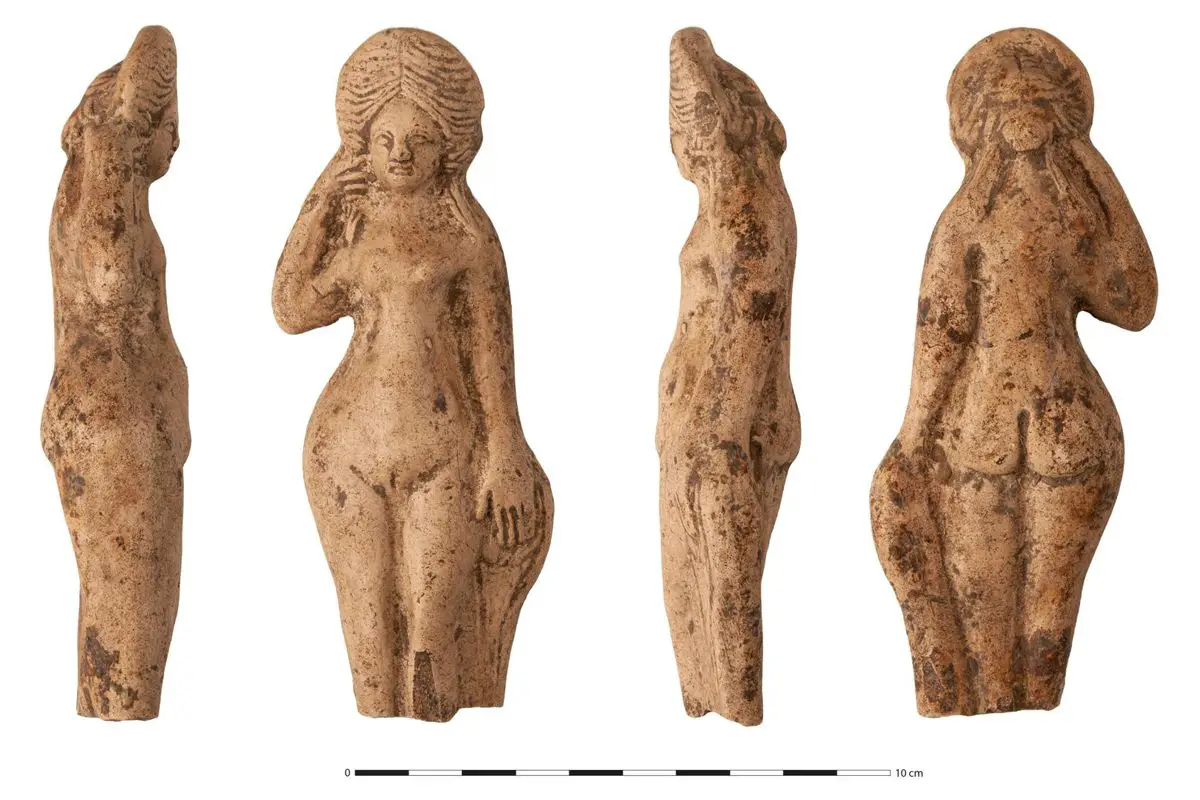A statuette of Venus has been uncovered by archaeologists during excavations of a Roman rubbish dump in the city of Rennes, France.
Archaeologists from the Institut national de recherches archéologiques préventives (Inrap), have been conducting excavations in the area of the rue d’Antrain in preparation for development works of new housing.
The team uncovered an ancient stone quarry from the Gallo-Roman period on the outskirts of the Roman city of Condate Riedonum (Rennes), also known as Civitas Riedonum, which was situated on the former tribal centre of the Gallic Riedones.
The quarry dates from the 1st century AD and was a source of brioverian schist which occurs in the Rennes Bassin. The Romans extracted the building material for the construction of foundations and street slabs in Condate, however, as the deposits became scarcer, the quarry was abandoned and was used as a rubbish dump during the 2nd century AD.
Excavations of the accumulated layers of Roman rubbish has revealed a multitude of finds, including fragments of ceramic tableware, several terracotta statuettes of deities, coins and items of adornment (fibulas), with the most notable discovery being a statuette of Venus.
In the Roman pantheon, Venus is a goddess who is associated with love, beauty, desire, sex, fertility, prosperity, and victory. According to Roman mythology, she was an ancestor of the Roman people through her son, Aeneas, who survived the fall of Troy and fled to Italy. The Romans adapted the myths and iconography of her Greek counterpart, Aphrodite, where she became revered in Roman religion under numerous cult titles.
The statuette dates from between the 1st to 2nd century AD and depicts a 10cm tall naked Venus made from terracotta. She is shown holding her hair which is held in place by an imposing headdress.
By the late medieval period, the quarry was completely filled in and was re-occupied with evidence of craft and/or domestic activities. In the upper stratigraphic layers, the team have found the remains of wooden buildings (in the form of post holes), ovens, and pipes from the 17th century.
Header Image Credit : Emmanuelle Collado
